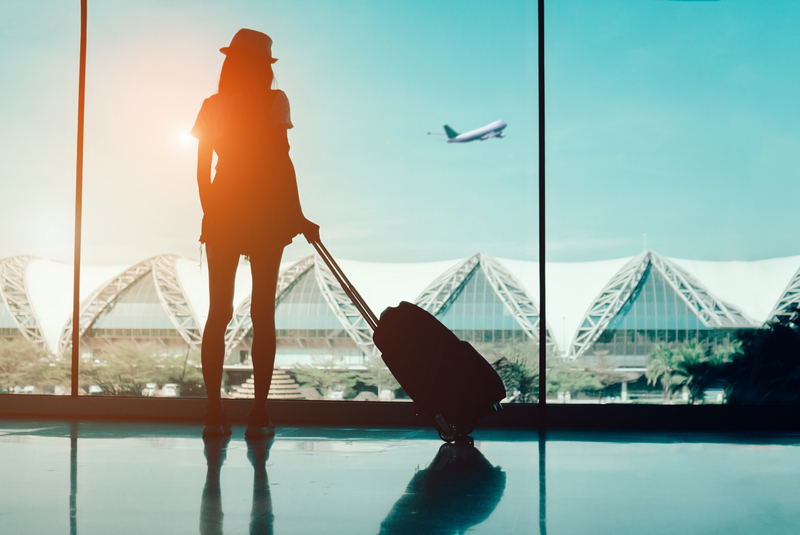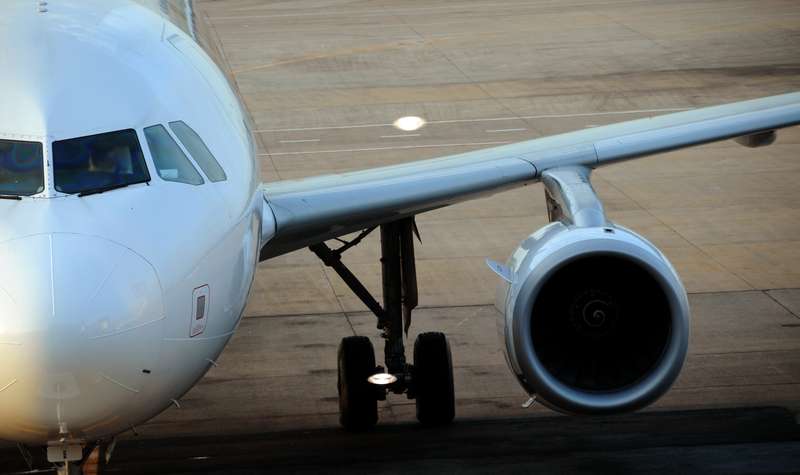As the months of coronavirus quarantine tick on, travellers continue to wonder: Where can I travel in the EU? The answer depends on where you’re travelling from.
Holiday Season Travel Restrictions
As we approach the winter holiday season, there has been a push to create a comprehensive travel policy across the EU. The European Commission is considering a proposal that would bring consistency to all member states’ travel and border restrictions for travellers from other parts of the EU.
In addition, the the European Travel Commission (ETC) is currently pushing the Commission to replace quarantine requirements with testing requirements in order to encourage more free movement and help save the travel industry. However, neither of these proposals has yet been signed into law.
It’s unlikely that EU member states will give up their autonomy and agree to wholesale rules that apply to the entire EU. Currently, some states have very strict rules – Austria travel restrictions, for example, as well as Norway and Sweden. Others are lenient, like UK, Ireland and France travel restrictions. It’s likely that the EU will continue with a piecemeal policy on travel restrictions.
Restrictions by Country
The European Council (EC) publishes a list of countries that are considered safe for travel to and from the EU. While it is continuously updated and subject to change, the current list is:
Algeria
Australia
Canada
Georgia
Japan
Montenegro
Morocco
New Zealand
Rwanda
Serbia
South Korea
Thailand
Tunisia
Uruguay
China (on the condition of reciprocity)
The Council advises that EU countries put in place policies to gradually lift restrictions on travellers from these countries. However, travellers must keep in mind that these allowances are only guidelines. EU member states are still free to make their own rules, and as you’ll see below, not all countries are accepting travellers from all of these countries.
Many EU countries are allowing travel between EU member states, Schengen Zone states and the UK. However, for the most part residents of the United States are still banned from EU travel. Exceptions include the UK, Ireland and Croatia.
Always contact the country you’re travelling to before you leave. You can call the embassy of your resident country in your destination country – for example, UK travellers would call the UK embassy in their destination country. Travel restrictions can change quickly as the coronavirus increases or decreases in certain places.
Now let’s dive into some country-specific travel restrictions.
Austria Travel Restrictions
Austria allows most citizens of the EU and Schengen Area to enter without showing proof of a negative test result or quarantining. The only exception is travellers arriving from Paris or Cote d’Azur in France, Lisbon and Norte in Portugal, or mainland Spain and the Balearic Islands.
Austria travel restrictions exclude residents of third countries, including the US, to enter from outside the EU or Schengen Area. Even Austrian citizens returning from high-risk areas, including Brazil, India, China, Russia, Turkey, Ukraine and USA, will need to prove a negative test result within 48 hours of arrival.
Belgium Travel Restrictions
Belgium travel restrictions don’t apply to residents of the European Union, Schengen Area or the UK. Travellers returning to or visiting Belgium must fill out a Passenger Locator Form, go into quarantine and undergo testing to prove a negative test result.
For third-country travel, Belgium allows residents from Australia, Canada, Japan, New Zealand, Rwanda, South Korea, Thailand and Uruguay to enter. Again, you may need to prove a negative test or quarantine yourself.
Greece Travelling Restrictions
European travellers from the EU, UK, Switzerland, Norway, Lichtenstein and Iceland are allowed to travel to Greece. However, passengers on flights from Bulgaria, Romania, UAE, Malta, Belgium, Spain, Albania, North Macedonia, Hungary, Czech Republic and Poland must prove a negative test result within 72 hours of entry.
Travellers from Australia, Canada, Georgia, Japan, New Zealand, Rwanda, South Korea, Thailand, Tunisia, Uruguay, China and the UAE are also allowed to bypass Greece travelling restrictions, subject to quarantine and testing rules.
Germany Travel Restrictions
Travellers from EU countries and the Schengen Area are allowed to enter the country without Germany travel restrictions. Australia, Canada, New Zealand, Georgia, Thailand, Tunisia and Uruguay are also allowed to enter, but may need to be tested or undergo quarantine. Travellers from risk areas will also have to quarantine.
France Travel Restrictions
There is a relatively large list of countries exempt from France travel restrictions: EU member states, Andorra, Australia, Canada, Georgia, the Holy See, Iceland, Japan, Liechtenstein, Monaco, New Zealand, Norway, Rwanda, San Marino, South Korea, Switzerland, Thailand, Tunisia, UK and Uruguay. Arrivals from any other countries are restricted, and if you do meet the criteria, you will need to quarantine or take a test.
Ireland Travel Restrictions
Ireland is another country that has mostly been open for travel and tourism, however, it recently enacted some travel restrictions. The only countries whose residents may enter without taking a test or quarantining are Estonia, Finland, Greece, Greenland, Hungary, Italy, Latvia, Lithuania, Norway and Slovakia. However, Ireland travel restrictions are still among the most lenient on this list. Ireland even allows US citizens, but they must quarantine for 14 days upon arrival.
Italy Travel Restrictions
Non-essential travel from most third countries is not allowed. However, residents of Australia, Uruguay, Canada, Georgia, Japan, Republic of Korea, Tunisia, Thailand, Rwanda and New Zealand may enter Italy. EU residents are also allowed under the Italy travel restrictions, as well as relatives of Italian citizens. However, travellers, including Italian citizens, from Croatia, Greece, Malta, Spain must prove a negative test.
Norway Travel Restrictions
Norway travel restrictions are very strict. Only residents of Greenland, Liechtenstein, Latvia and parts of Sweden and Finland can enter Norway without taking a test or quarantining. Our citizens of the EU and Schengen Areas may travel to Norway, but must quarantine or take a test. Norway has closed its borders to all third countries, even those that are on the Council’s approved list.
Portugal Travel Restrictions
Portugal allows travellers from the EU, Schengen Area and UK. It also allows residents of most of the countries on the Council’s approved list: Australia, Canada, China, South Korea, Georgia, Japan, Morocco, New Zealand, Rwanda, Thailand, Tunisia and Uruguay. These travellers won’t have to fill out a passenger form, but may be subject to quarantine and testing rules per Portugal travel restrictions. Those on domestic flights from Madeira and the Azores will need to fill out the form.
Spain Travel Restrictions
Like most EU member states, Spain travel restrictions allow residents of the EU, Schengen Area and UK to enter. Residents of Australia, Canada, Georgia, Japan, New Zealand, Rwanda, South Korea, Thailand, Tunisia and Uruguay are also allowed as long as they are travelling directly from their home country. China is currently excluded from this list due to reciprocity. Note that even residents of approved third countries may need to quarantine or prove a negative test result.
Sweden Travel Restrictions
Until the end of October, Sweden travel restrictions will ban all non-essential travel from any countries outside the EU. However, citizens from the EU, UK, Switzerland, Andorra, Monaco, San Marino and the Vatican are allowed. Relatives of Swedish residents or EU residents are allowed, as well as those with Swedish national visas. Travellers may also be able to use “corridor countries” like the UK to enter, because travels to Sweden from the EU are allowed.
UK Travel Restrictions
There is a long list of countries from which travellers can enter without being subject to UK travel restrictions. This includes most EU and Schengen Area countries, with the exception of Croatia, Czech Republic, France and Austria. Many third countries are also allowed, including Australia, Bermuda, Cuba, Greenland, Japan, New Zealand, South Korea, Taiwan, Thailand, Vietnam and many Caribbean countries. Keep in mind that UK travel restrictions vary by area. Scotland and Wales, for example, have restrictions on travellers from Greece and Portugal, while England and Ireland do not.
Ways To Plan Ahead For Travel
It’s always vital to plan ahead and be aware of any travel restrictions at your destination, but even more so during the coronavirus. You also need to plan more carefully if you’ll be flying or staying in a hotel. Here’s what to consider:
- Decide how to get there. Many airlines have put in place social distancing on flights, mask requirements and more – check with your airline about their health and safety protocols. If you live within the EU, driving or taking the train are other great options.
- Decide where to stay. As with airlines, you’ll want to check your hotel’s policies about cleaning and social distancing. Also check if the amenities you want will be open: many hotels are closing down pools, gyms and communal areas. And always look at the cancellation and refund policy.
- Know what to bring. Most countries require mask-wearing in public spaces, so bring several masks with you. Always bring hand sanitizer and disinfecting wipes, as well as updated emergency contact information.
- Make a backup plan. In this new normal, travel restrictions change quickly. If you can, make a backup plan for alternate transportation. You should also prepare for the worst – you may end up taking a “staycation” instead.
- Know your travel rights. Even if you’ve purchased a refundable ticket or travel insurance, read the fine print – claims related to the coronavirus may not be covered. However, many hotels and airlines are offering extra-flexible policies currently.
It’s also essential to know your flight passenger rights – flights are often cancelled or delayed in the post-pandemic world. You cancontact Travel Refundto learn about your rights, make adelayed flight claimor make acancelled flight claim. We’re always here to help.


